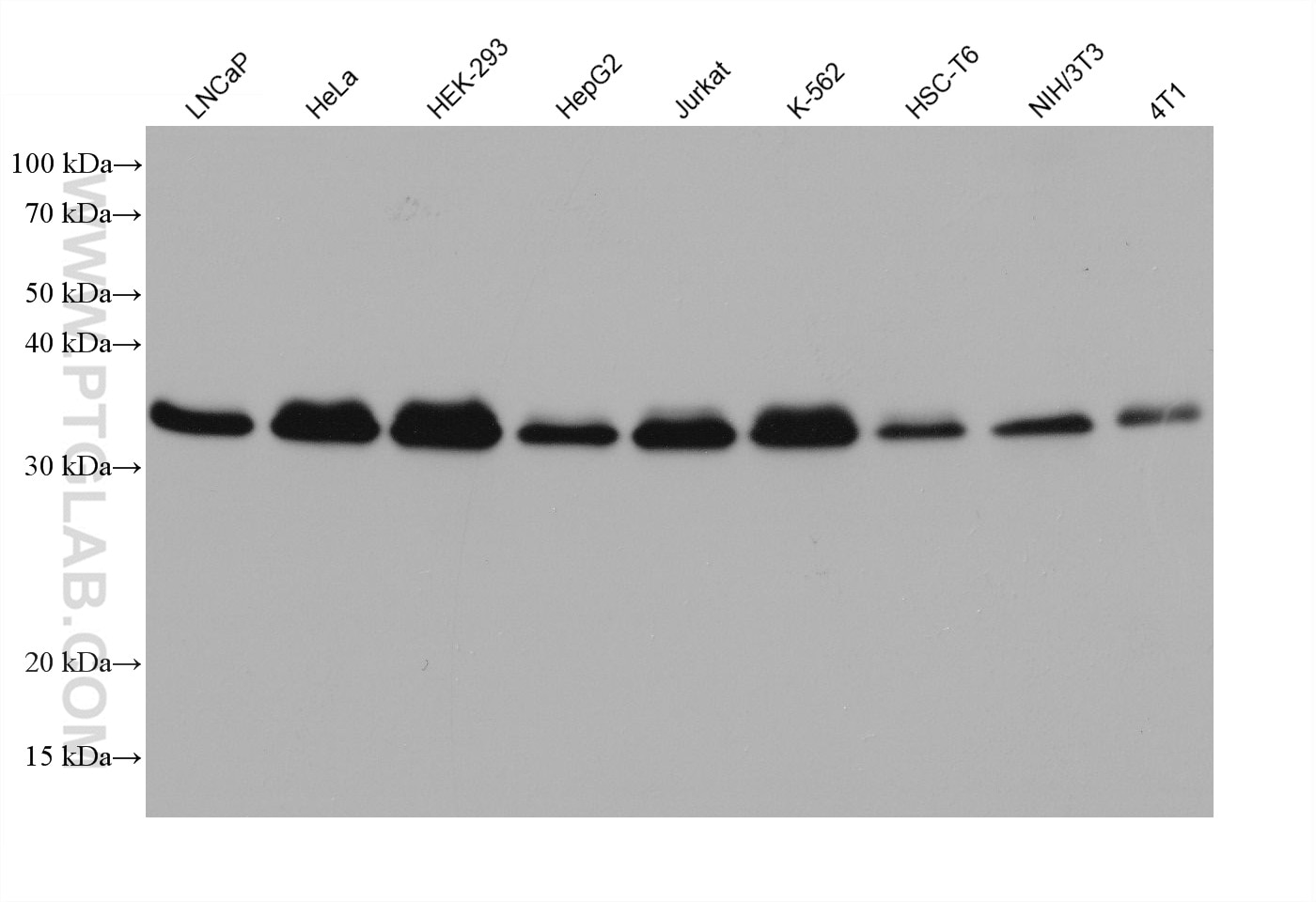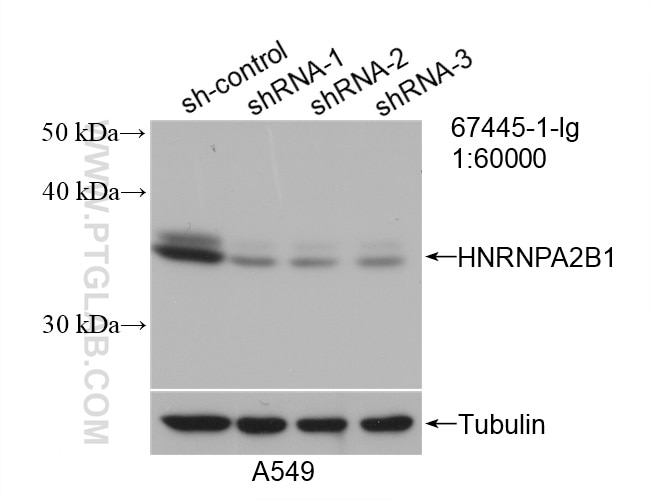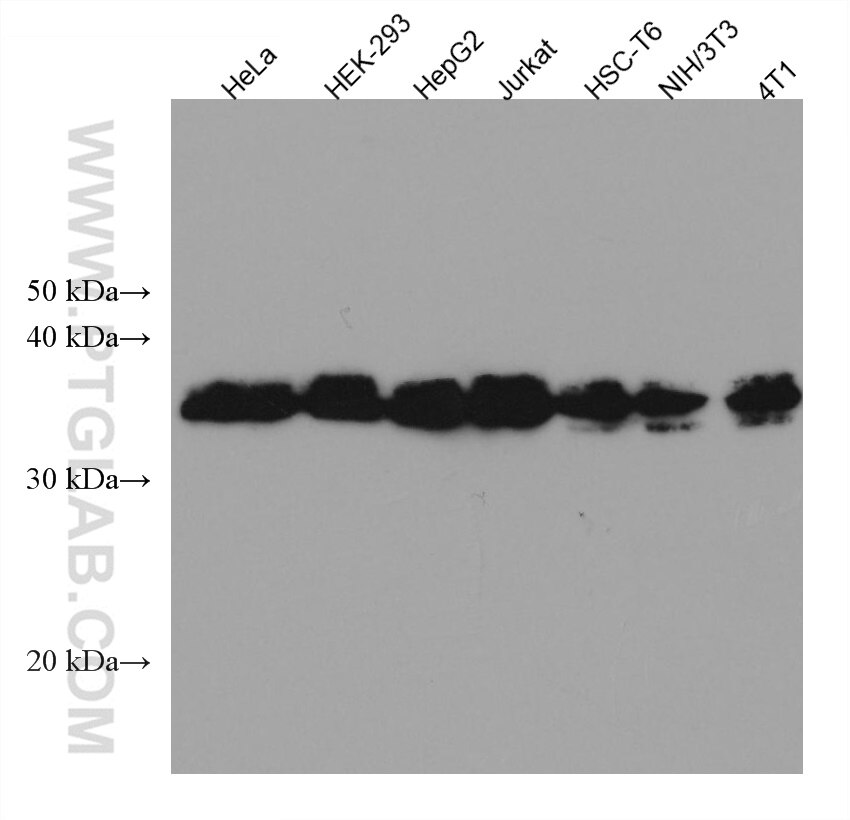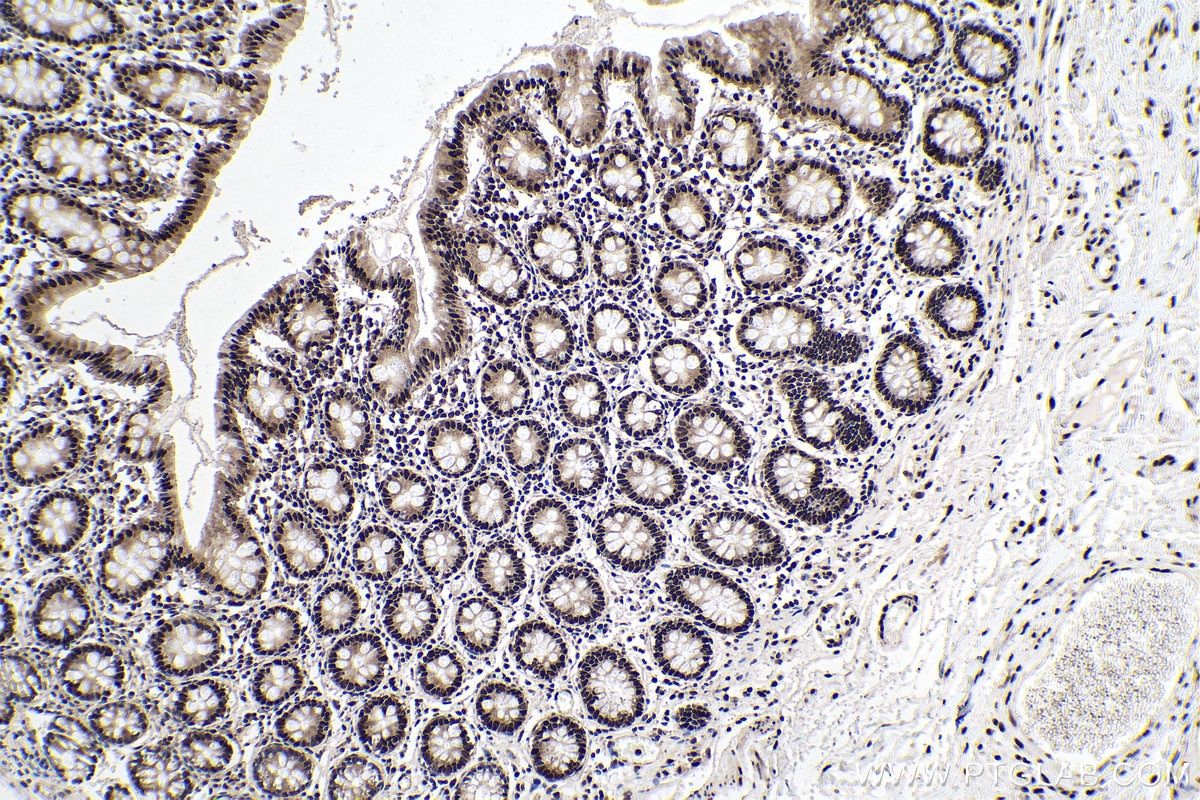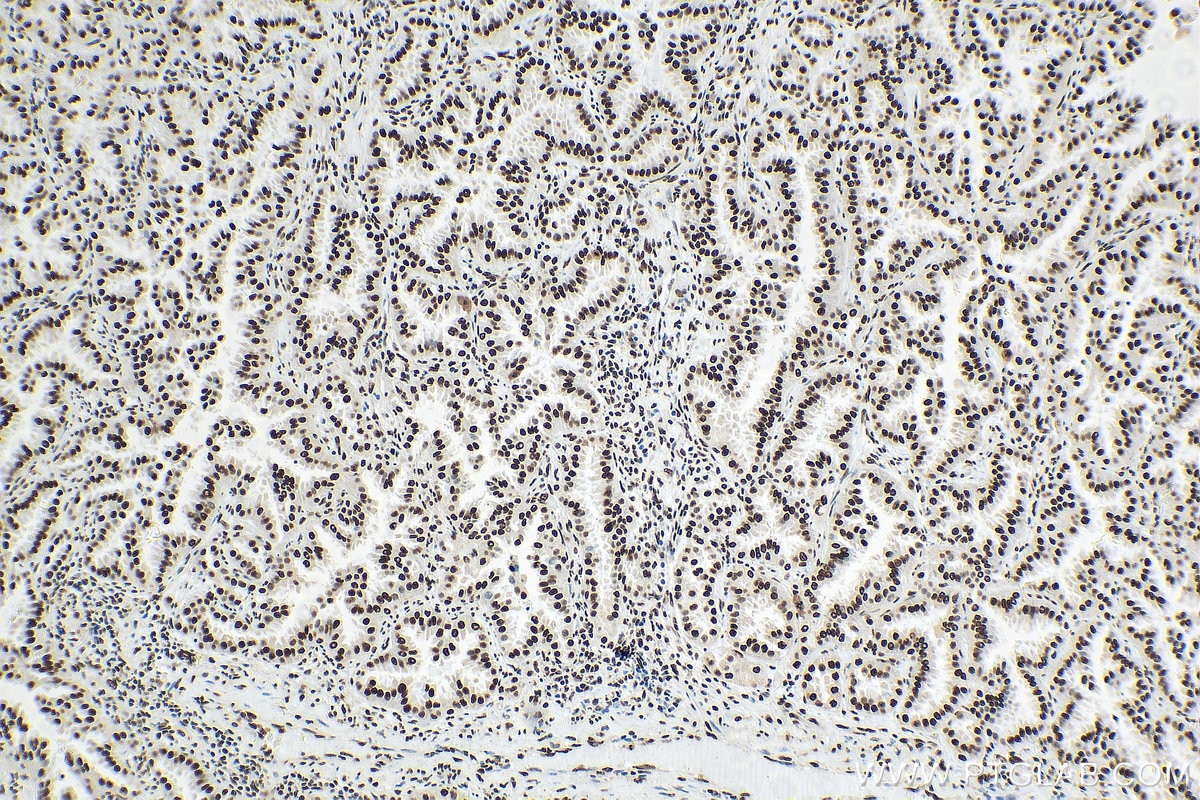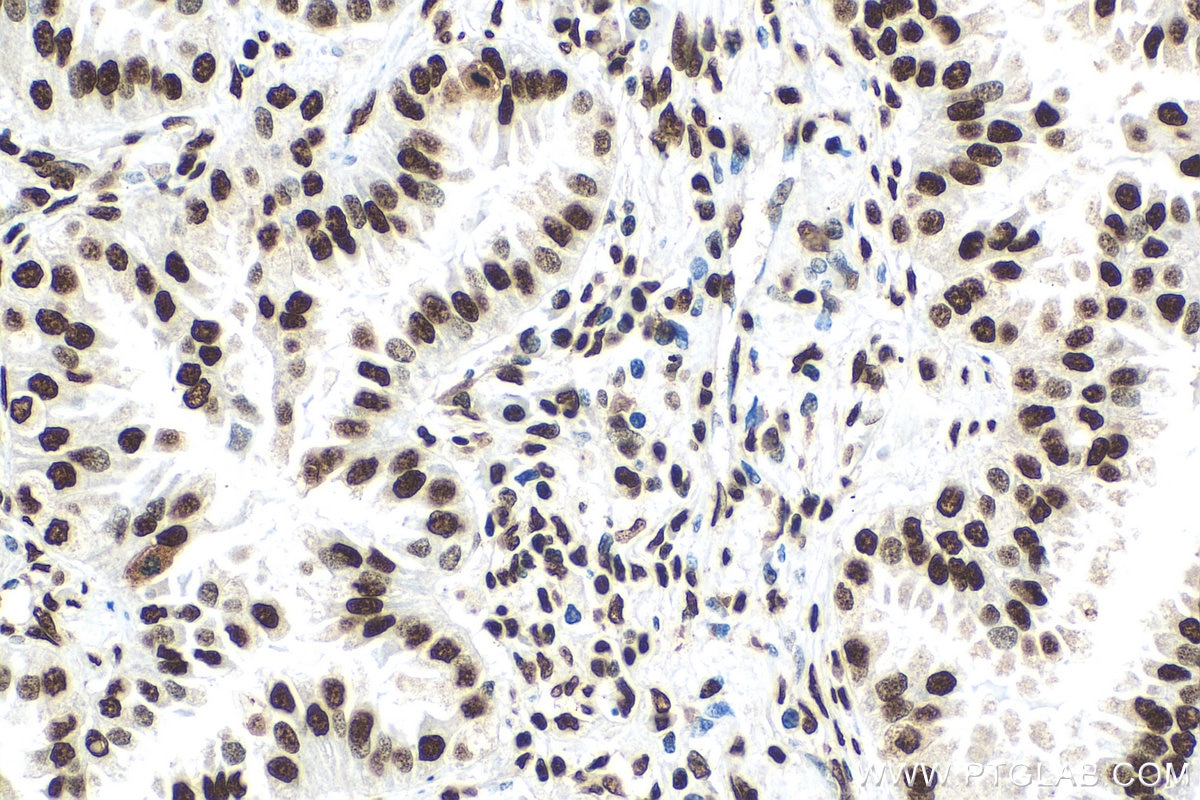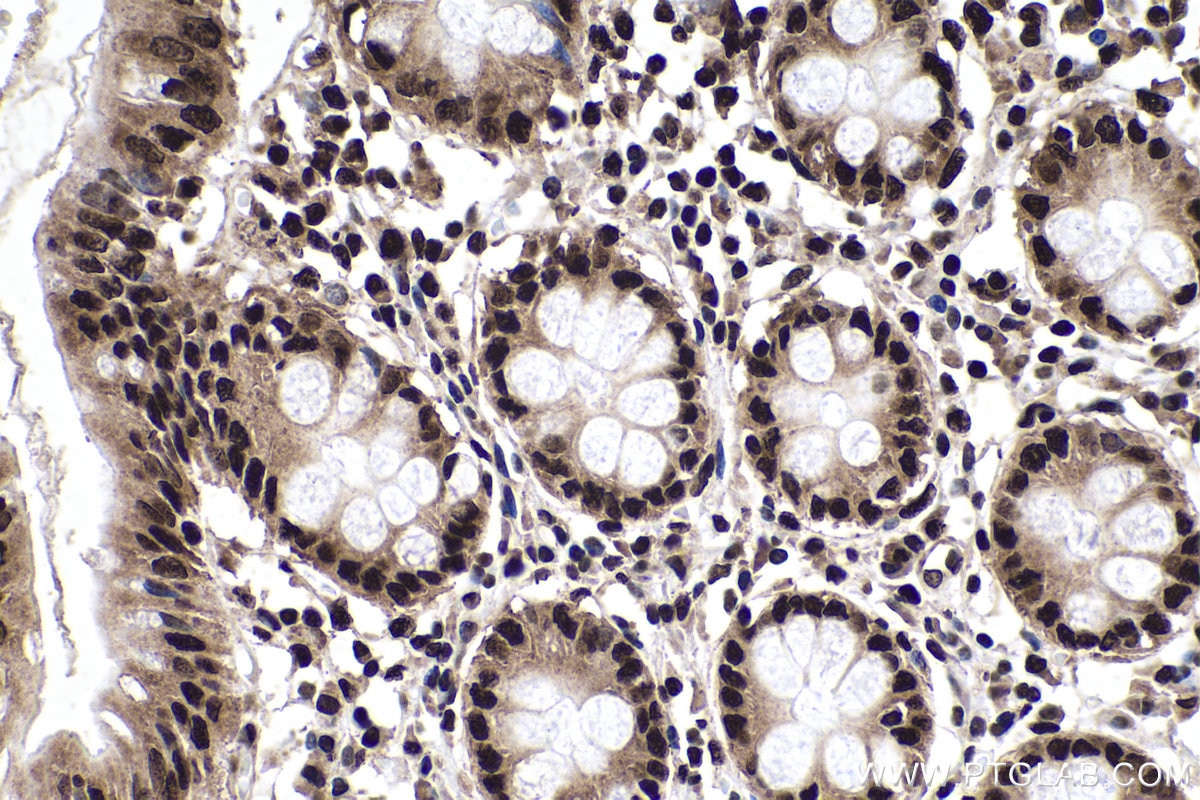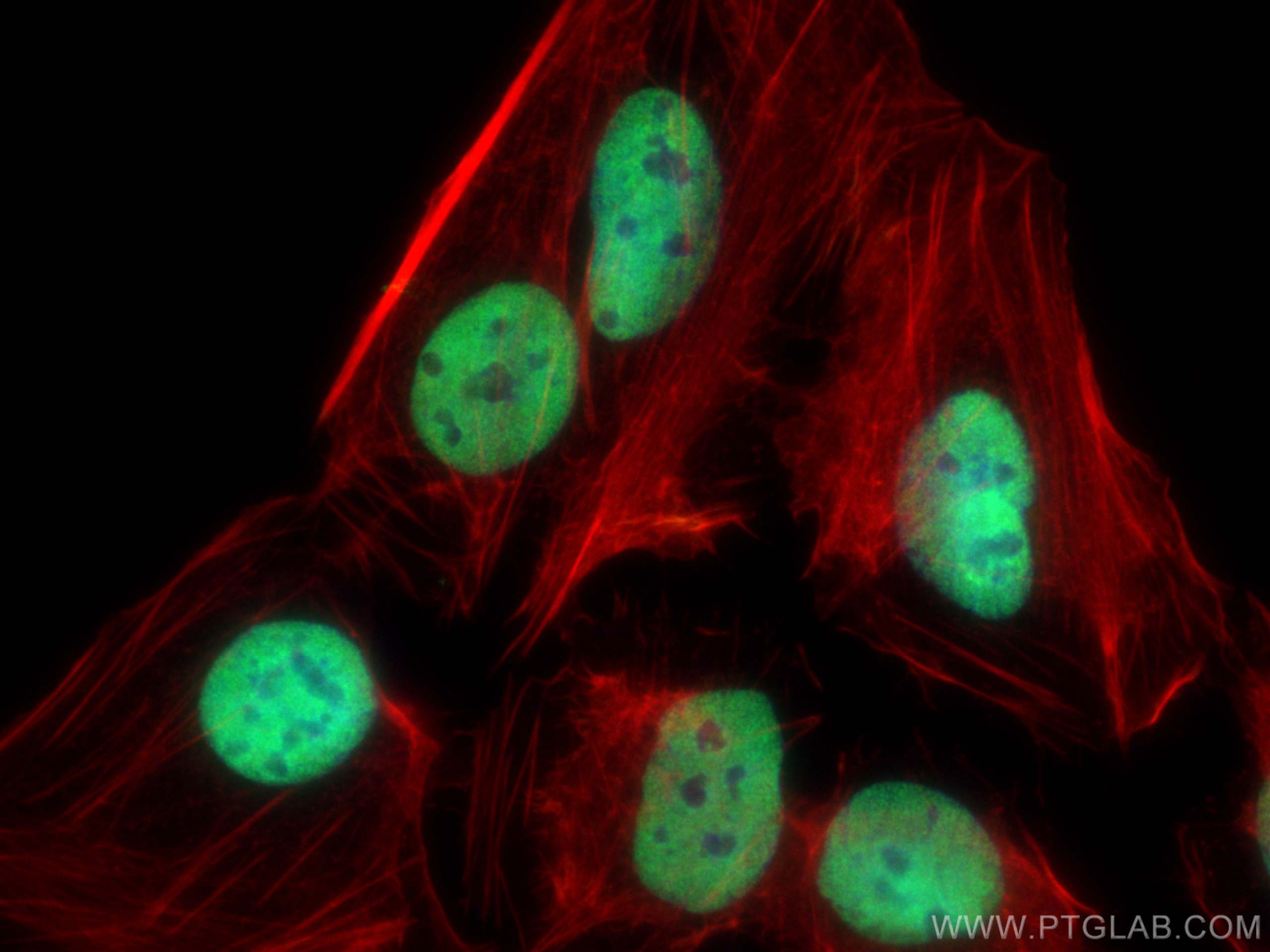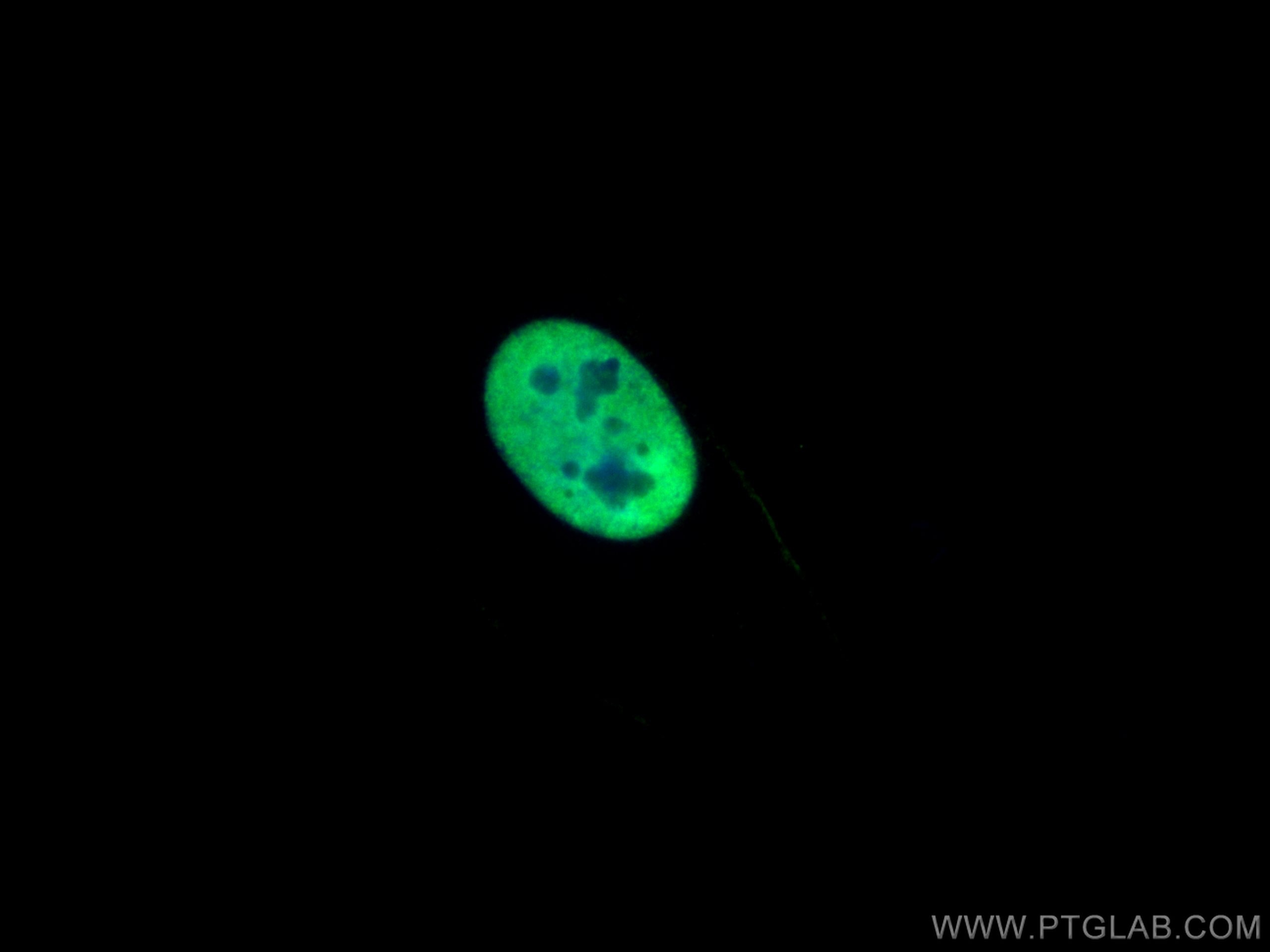- Phare
- Validé par KD/KO
Anticorps Monoclonal anti-HNRNPA2B1
HNRNPA2B1 Monoclonal Antibody for WB, IHC, IF/ICC, ELISA
Hôte / Isotype
Mouse / IgG2a
Réactivité testée
Humain, rat, souris et plus (1)
Applications
WB, IHC, IF/ICC, RIP, ELISA
Conjugaison
Non conjugué
CloneNo.
3H6F7
N° de cat : 67445-1-Ig
Synonymes
Galerie de données de validation
Applications testées
| Résultats positifs en WB | cellules LNCaP, cellules 4T1, cellules A549, cellules HEK-293, cellules HeLa, cellules HepG2, cellules HSC-T6, cellules Jurkat, cellules K-562, cellules NIH/3T3 |
| Résultats positifs en IHC | tissu de côlon humain, tissu de cancer du poumon humain il est suggéré de démasquer l'antigène avec un tampon de TE buffer pH 9.0; (*) À défaut, 'le démasquage de l'antigène peut être 'effectué avec un tampon citrate pH 6,0. |
| Résultats positifs en IF/ICC | cellules U2OS, |
Dilution recommandée
| Application | Dilution |
|---|---|
| Western Blot (WB) | WB : 1:5000-1:50000 |
| Immunohistochimie (IHC) | IHC : 1:8000-1:32000 |
| Immunofluorescence (IF)/ICC | IF/ICC : 1:400-1:1600 |
| It is recommended that this reagent should be titrated in each testing system to obtain optimal results. | |
| Sample-dependent, check data in validation data gallery | |
Applications publiées
| KD/KO | See 2 publications below |
| WB | See 5 publications below |
| IHC | See 1 publications below |
| IF | See 1 publications below |
| RIP | See 1 publications below |
Informations sur le produit
67445-1-Ig cible HNRNPA2B1 dans les applications de WB, IHC, IF/ICC, RIP, ELISA et montre une réactivité avec des échantillons Humain, rat, souris
| Réactivité | Humain, rat, souris |
| Réactivité citée | Humain, porc |
| Hôte / Isotype | Mouse / IgG2a |
| Clonalité | Monoclonal |
| Type | Anticorps |
| Immunogène | HNRNPA2B1 Protéine recombinante Ag6699 |
| Nom complet | heterogeneous nuclear ribonucleoprotein A2/B1 |
| Masse moléculaire calculée | 37 kDa |
| Poids moléculaire observé | 36 kDa |
| Numéro d’acquisition GenBank | BC000506 |
| Symbole du gène | HNRNPA2B1 |
| Identification du gène (NCBI) | 3181 |
| Conjugaison | Non conjugué |
| Forme | Liquide |
| Méthode de purification | Purification par protéine A |
| Tampon de stockage | PBS with 0.02% sodium azide and 50% glycerol |
| Conditions de stockage | Stocker à -20°C. Stable pendant un an après l'expédition. L'aliquotage n'est pas nécessaire pour le stockage à -20oC Les 20ul contiennent 0,1% de BSA. |
Informations générales
HnRNPA2B1 is one of heterogenous nuclear ribonucleoproteins (HnRNPs), which regulate the splicing and transportation of mRNA and participate in carcinogenesis. It has a role in packaging nascent mRNA, alternative splicing, tycoplamic RNA trafficking, translation and stabilization. Besides it may involve in telomere maintenance, cell proliferation and differentiation, and glucose transport.
Protocole
| Product Specific Protocols | |
|---|---|
| WB protocol for HNRNPA2B1 antibody 67445-1-Ig | Download protocol |
| IHC protocol for HNRNPA2B1 antibody 67445-1-Ig | Download protocol |
| IF protocol for HNRNPA2B1 antibody 67445-1-Ig | Download protocol |
| Standard Protocols | |
|---|---|
| Click here to view our Standard Protocols |
Publications
| Species | Application | Title |
|---|---|---|
J Transl Med HNRNPA2B1-mediated m6A modification of lncRNA MEG3 facilitates tumorigenesis and metastasis of non-small cell lung cancer by regulating miR-21-5p/PTEN axis
| ||
Cancer Lett HNRNPA2B1 regulates tamoxifen- and fulvestrant-sensitivity and hallmarks of endocrine resistance in breast cancer cells. | ||
Stem Cell Res Ther Requirement of splicing factor hnRNP A2B1 for tumorigenesis of melanoma stem cells.
| ||
J Virol VP3 protein of Senecavirus A promotes viral IRES-driven translation and attenuates innate immunity by specifically relocalizing hnRNPA2B1 | ||
Clin Transl Med Exosome-derived long non-coding RNA AC010789.1 modified by FTO and hnRNPA2B1 accelerates growth of hair follicle stem cells against androgen alopecia by activating S100A8/Wnt/β-catenin signalling | ||
J Nanobiotechnology Exosome-delivered NR2F1-AS1 and NR2F1 drive phenotypic transition from dormancy to proliferation in treatment-resistant prostate cancer via stabilizing hormonal receptors |
